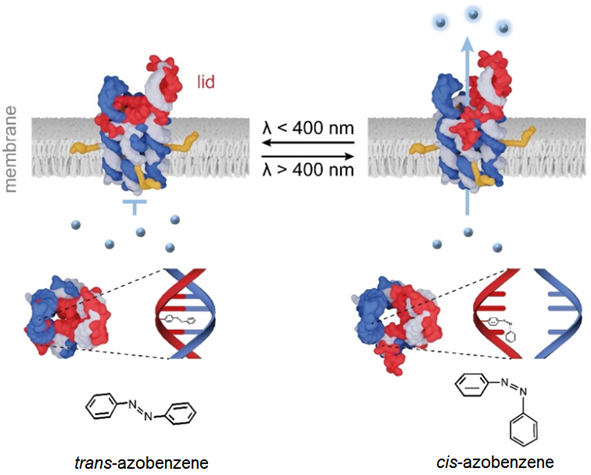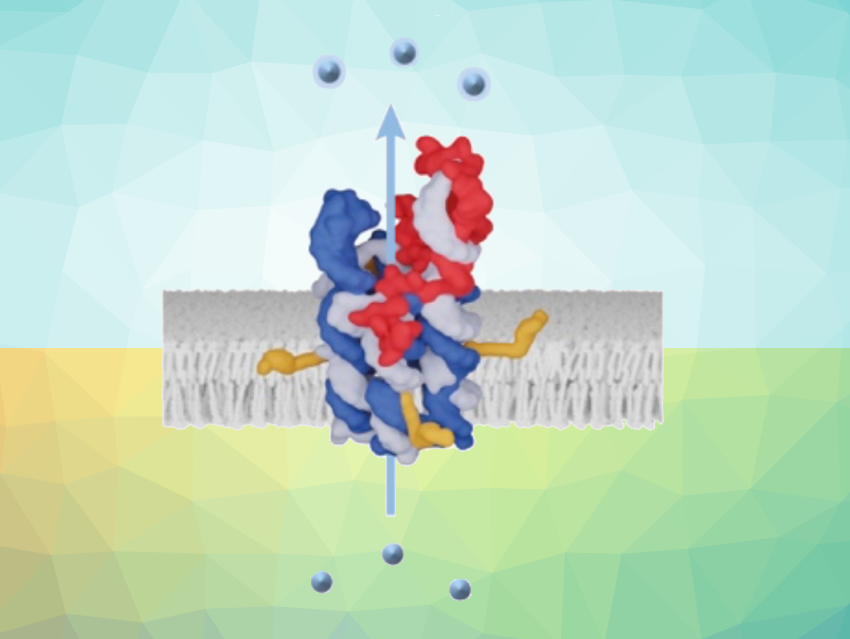Gated pores are barrel-shaped channels that can control the passage of ions and molecules across biological membranes using external triggers—such as light. While light-gated pores are present in Nature, their usage in applied fields is limited due to their low versatility and the difficulty of engineering them. Hence, there is research interest in creating easier-to-build synthetic light-gated channels.
Stefan Howorka and colleagues, University College London, UK, have used DNA nanotechnology to design a light-gated nanopore that can control molecular flow via an attached photoresponsive lid. Using DNA as a building material allows considerable design freedom and simplifies photochemical modifications.
The light-triggered nanopore is self-assembled from six DNA strands that form the pore and a “lid” strand carrying a light-switchable azobenzene unit (pictured below). The pore opens and closes through a conformational change of this azobenzene, caused by irradiation at specific wavelengths. The pore can insert into membrane vesicles, where irradiation with UV light can then trigger the release of molecules through the DNA nanopore.

According to the researchers, the results show that it is possible to create a light-triggered artificial pore that can control the release of cargo in a non-invasive and non-toxic manner. The light-triggered pore may have applications, e.g., in targeted drug release.
- A Light‐Triggered Synthetic Nanopore for Controlling Molecular Transport Across Biological Membranes,
Daniel Offenbartl-Stiegert, Alexia Rottensteiner, Adam Dorey, Stefan Howorka,
Angew. Chem. Int. Ed. 2022.
https://doi.org/10.1002/anie.202210886



